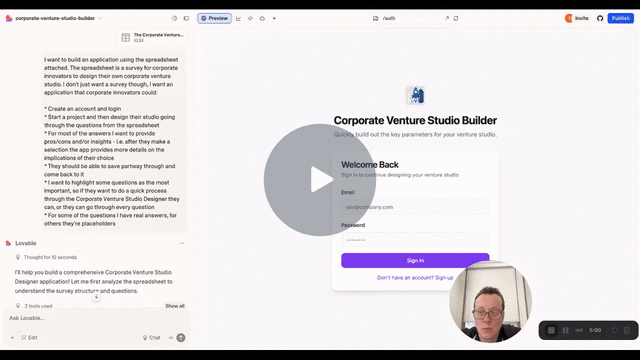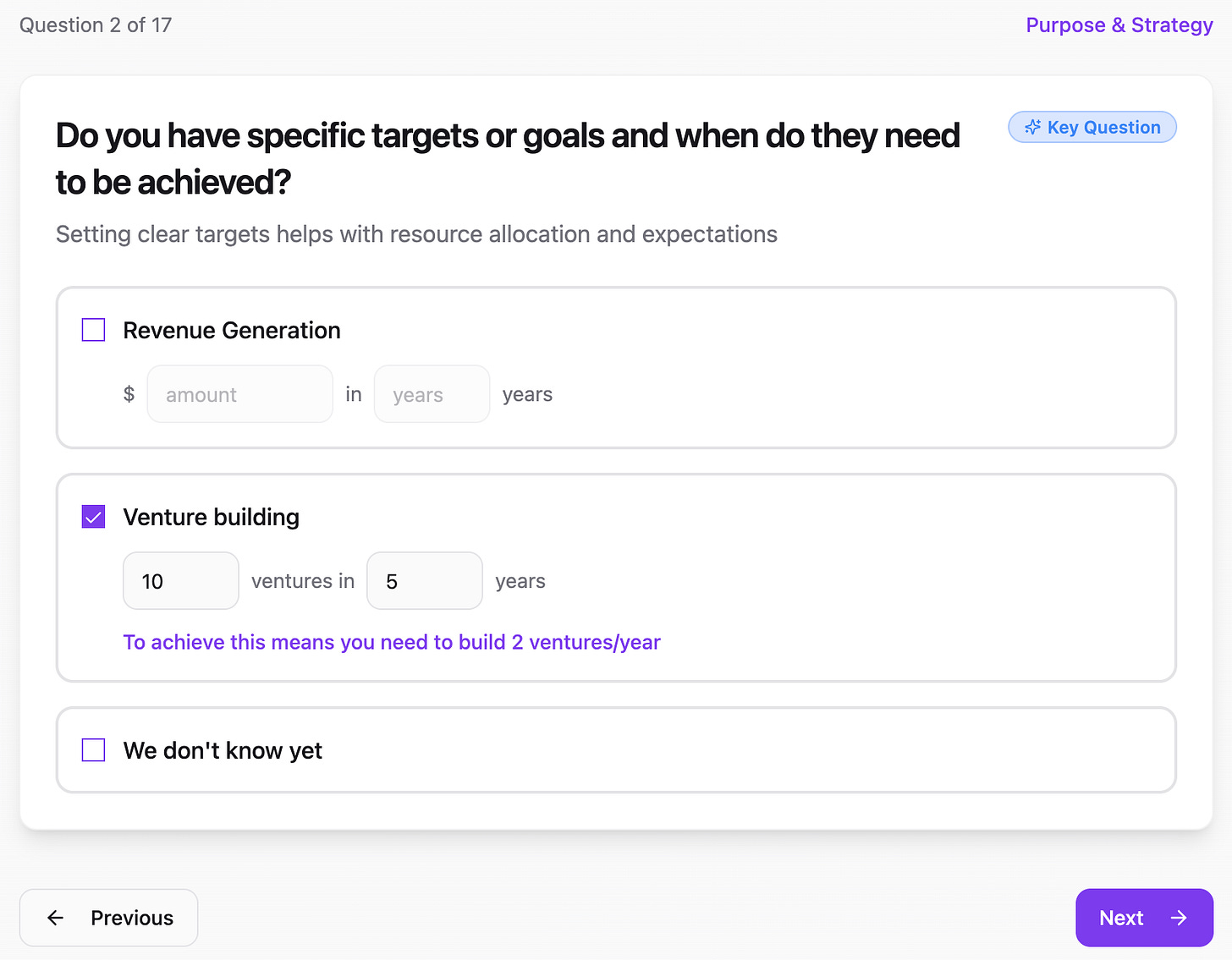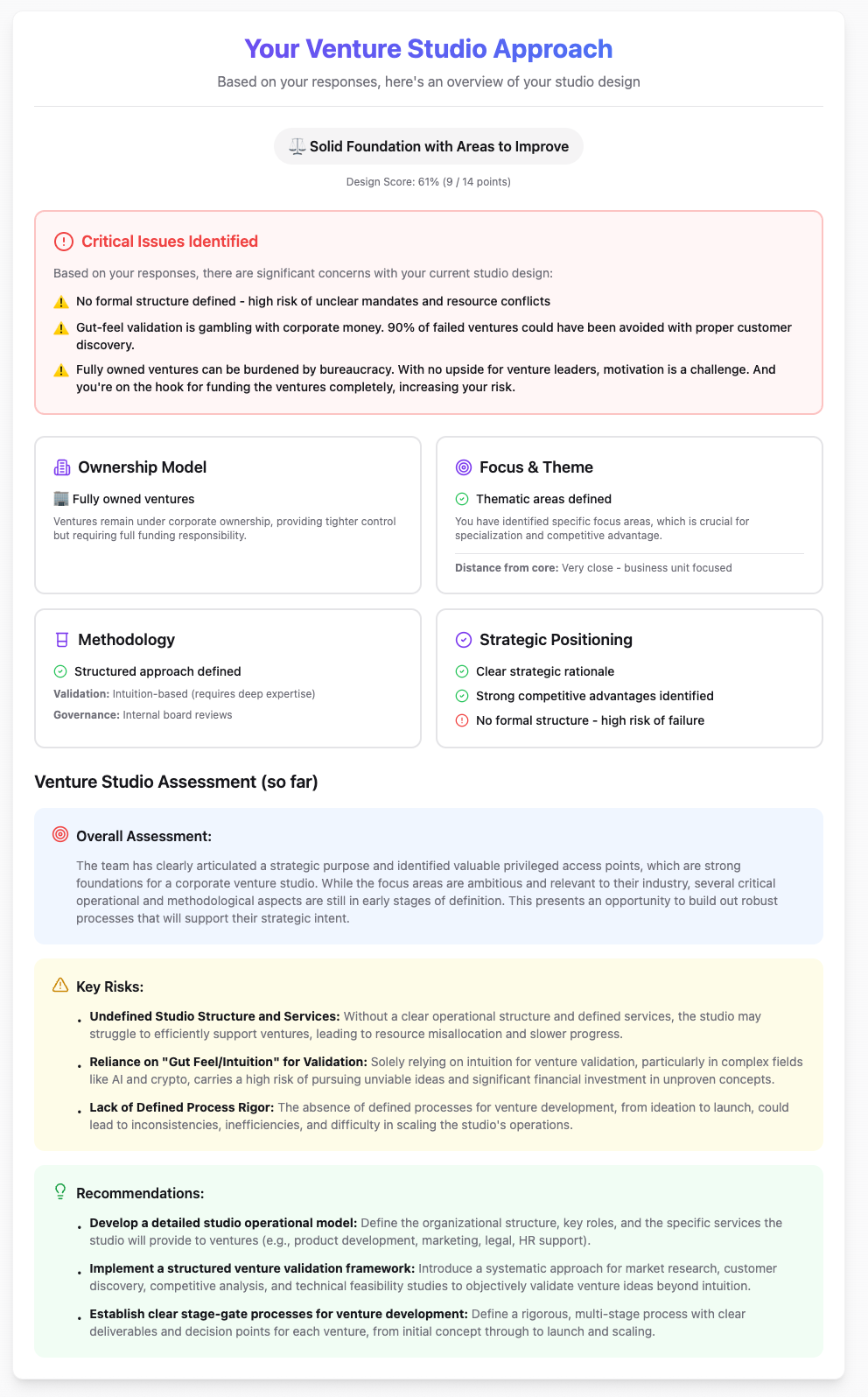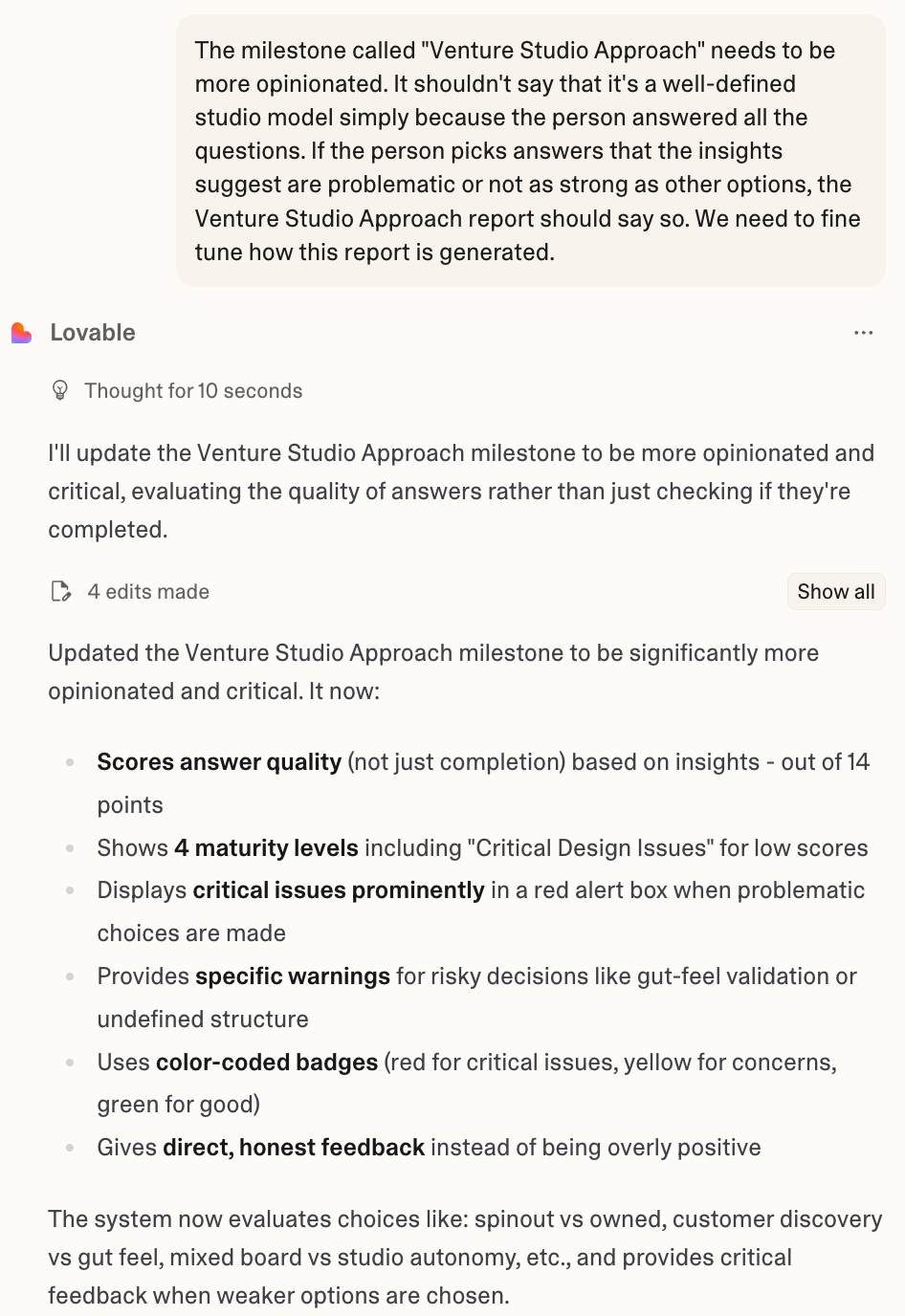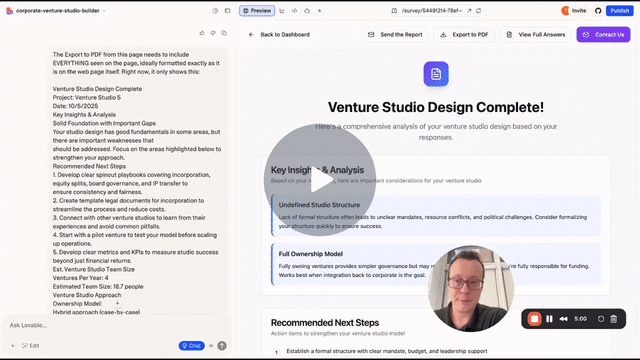How I Built a "Complete" Web App in 2 Days Using Lovable
It's a lot of fun, somewhat easy and a great experience overall. Everyone should be building apps this way (even just to learn).
In February I experimented with basic AI Agents (really glorified workflows) using a bunch of tools including Relevance AI, PhantomBuster and more. At the time I was also mucking around with Lovable for building web applications.
At the time, Lovable was super cool—it blew me away. But now it’s even better. (Note: This isn’t an advertisement for Lovable, there are a number of similar tools.)
Over the last two days I built a new web application.
Lovable recently added “Lovable Cloud” which sets up & manages the database automatically. This is a huge improvement from before. Feels like a game-changer for non-technical people building applications.
I noticed a few other things as well:
Lovable’s making way fewer mistakes. It’s much “smarter” with the code it creates. Previously, I found that Lovable wouldn’t always get things right, and would need multiple prompts to fix errors (that it had created). I felt like I was running around in circles. It’s still not perfect. Some things are still complicated and messy (e.g. exporting a nice looking PDF, or sending emails triggered on events). Both of these were rabbit holes for me, and I couldn’t get the PDF export to work the way I wanted to (after a lot of time and credits!)
Lovable’s more precise. Previously you’d ask it to do something and it would, but it would also change something else, as if the left hand didn’t know what the right hand was doing. This was very frustrating, because it would seemingly change things at random. You were constantly going around fixing things that Lovable broke. That happened a lot less this time; Lovable seemed to understand my instructions more clearly.
Lovable’s chat feature is helpful. This wasn’t available the last time I tried the product. The chat feature allows you to go back and forth with Lovable before it makes any changes to the code. I found this helpful for diagnosing issues, asking questions, and getting more comprehensive explanations for what it was doing.
It still took me 2 days (although I didn’t work full-time on it!)
The app is fairly basic, not ready for primetime…but it’s live.
Do you want to try it out?
Introducing: The Corporate Venture Studio Builder
The Corporate Venture Studio Builder is built from the Venture Studio Checklist that I previously created as a spreadsheet. It’s meant for corporate innovators and executives that are exploring the venture studio model.
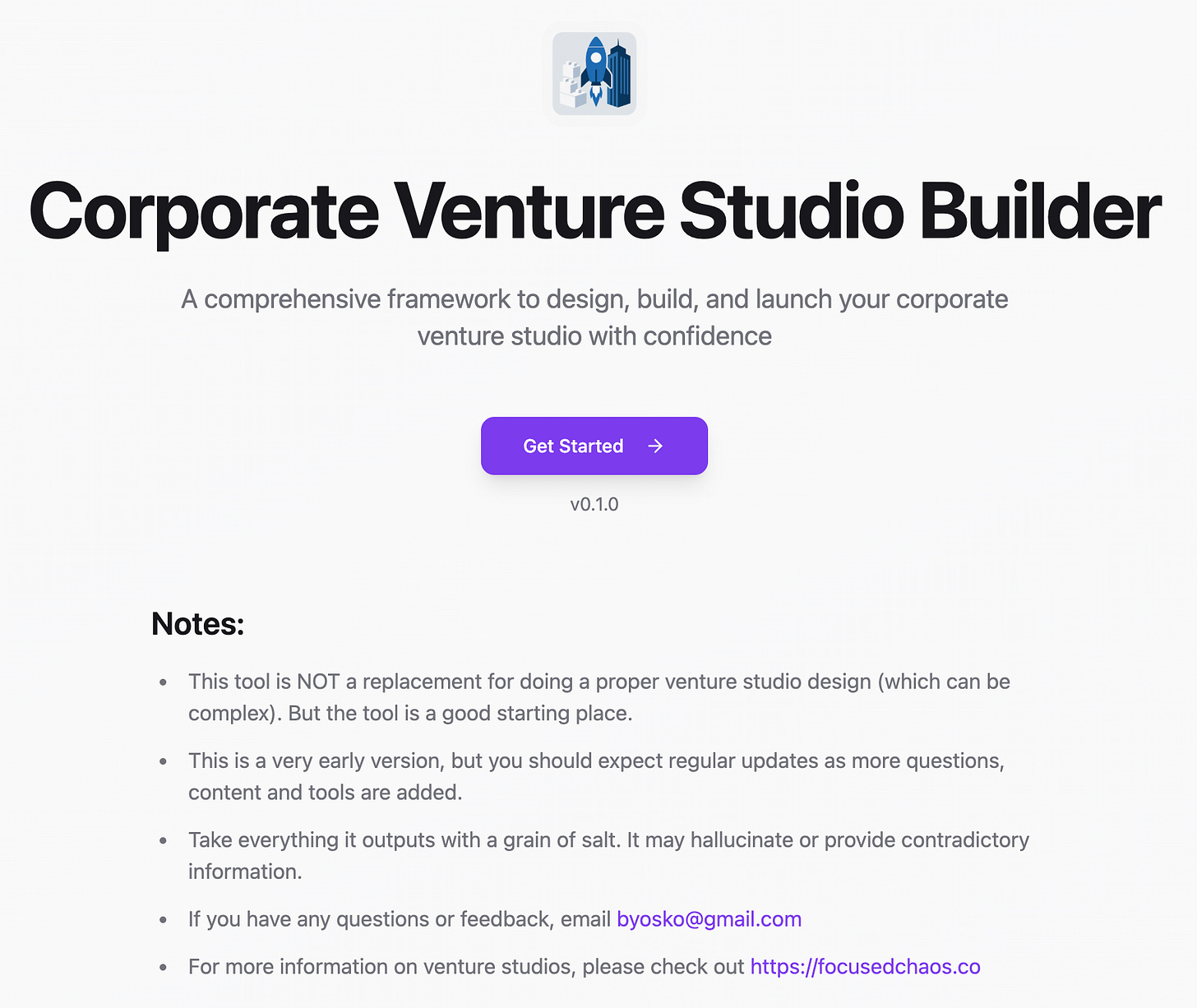
The builder uses fewer questions than the original checklist, but also provides more detailed analysis.
It’s mostly a survey (I probably should have used a survey tool!) but it also does a few cool things like calculate the studio team size you’ll need and other criteria. In the future I may look at building a budgeting tool and other capabilities, which would go beyond survey software.
Building the Corporate Venture Studio Builder
I thought it’d be interesting to show off a few key steps in the process.
Here’s the initial prompt, which includes a copy of the Venture Studio Checklist spreadsheet:
Then it went to work. I did a quick Loom video to show you the immediate output and process it went through to create a basic, but functioning application, with a database, login/authentication, design and fairly complete survey:
Remember: Garbage in, garbage out
My initial prompt could have been more detailed. A lot of the fine-tuning I had to do was a result of not being precise at the outset. I was too curious and eager to see what it would do. I’m sure this cost me a decent amount of time.
For example, the initial version used radio buttons for all options/answers, whether the answers were single- or multi-select. That felt strange UI-wise (multi-select = checkboxes). So I went through each question, verified if it was meant to be single- or multi-select and then asked Lovable to fix the UI.
The original spreadsheet had some information for Lovable to work from. On some questions it would say, “Select as many as you like” which Lovable interpreted correctly.
But generally it’s good to remember, “Garbage in, garbage out.” You can’t expect miracles. Note: As I’m typing this I’ve realized that I probably could have prompted Lovable once to go through every question, double check it as a single- or multi- select and then use either radio buttons or checkboxes. I did it one question at a time. 😜
Once the basic application was setup, I started fine-tuning the questions. I was asking Lovable to make small copy changes to questions and answers, which felt silly. So I asked if there was a different way to edit the questions and answers by accessing the database directly:
I had assumed the questions were in the database, but they weren’t.
Incidentally, Option 1 is pretty funny, because it’s useless and wouldn’t have solved the problem. At least Lovable recognized that.
I decided to keep the questions/answers hardcoded (and not in the database), because I felt like working in Supabase (the database Lovable uses) would be more complicated. As a result I spent hours tweaking questions and answers. This would have been much easier in a survey software tool. 😃
Lovable did a lot with very little
Lovable did a great job of creating insights from the small amount of content/data provided in the spreadsheet. It was a pleasant surprise!
Note: There was a lot of fine-tuning and nitpicking to add more details/context to questions and the insights that were generated. Again, this is a good reminder that if you don’t provide Lovable (or a similar tool) with enough details, it’ll use what it can (and probably make up the rest). So a lot of my chats with Lovable looked like this:
Lovable can handle fairly complex prompts
The more you prompt a tool like Lovable, the better you get. I’m far from an expert, but I was super impressed with a lot of its output.
Here’s an example of one of my prompts:
There are at least three key instructions in there and each bullet under “Note” is also an instruction. Lovable followed everything. Here’s the output:
Note: Calculating the # of ventures to build per year is pretty simply, but it actually feeds into a future question.
Lovable also does a good job with fairly basic prompts
One of the cool things I added to the Corporate Venture Studio Builder is milestone reports. I want to give people something of value throughout the survey, by analyzing their responses and making recommendations. Here’s my very basic prompt for doing that:
I had no idea what it would generate, but it’s honestly quite good (it did take a bunch of work to refine it to this point):
What’s interesting is that this doesn’t use AI. It’s hardcoded based on logic that Lovable created. I’ll be honest: I thought the responses were AI generated. 😉
I started prompting Lovable as if it was using AI to generate the milestone summaries and reports. I didn’t look carefully at what it was doing (while Lovable works, I’m often doing something else!) But it’s clear this isn’t using AI and it’s trying to interpret my fairly open-ended prompt into code.
At some point Lovable asked me if I wanted to use AI. I’m not sure why. It came up as an option. I can’t find the prompt that triggered it, but it started using Gemini 2.5 Flash to come up with recommendations in the milestones and final report. BTW, telling Gemini to be more opinionated and punchy was hilarious (I wish I had captured screenshots). It was completely rude and essentially telling people off if their survey answers weren’t great.
I deleted some of these AI generated sections because it was too annoying to improve (although I’ll go back and try some very specific context/prompt engineering later). One section did survive (although the formatting occasionally breaks like in this screenshot):
Not everything was easy: Export to PDF and Send the Report by Email sucked
Earlier I mentioned that building the Export to PDF featured was difficult. I won’t bore you with all the details, but the gist of it is that the PDF wouldn’t include all the information that shows up on the final summary page. I also created a Send the Report button, but the email was missing information as well. For fun, I created a quick video of all the work Lovable and I tried to do in order to make these features work:
Looking back, I think half my time was spent trying to get Export to PDF and Send the Report features working. They kinda work…
So what’s next?
For starters, feel free to try out the Corporate Venture Studio Builder and let me know what you think.
There’s a lot of polishing to do. Polishing takes credits, because you keep messaging Lovable to make small changes, and each message costs you. I burned through my monthly credit allowance already!
I do want to work on a few things:
Administrative reporting on usage to track where people stop in the process, how many projects/surveys people create, etc.
Event tracking on key actions; i.e. what features are people using and how often
Fix the PDF and Email Reports
Improve the analyses that are generated, with and without AI
Add a “venture building process” tool, where the user can define the key milestones/stage gates in their operating model, how long they take, resources required, etc.
Potentially add a budgeting tool
Branding and UI—it looks good, but it can look much better; potentially bring this into Highline Beta as an official tool
I’m not an expert with Lovable (or any other similar tool), but the power and potential are clear. It’s a ton of fun to jump in and build something. Tinkering is super cool (until you run out of credits!) Lovable will only get better, which will translate to easier builds, less time invested and more stuff being launched (which is great!)
If people are interested, I’ll continue to share my journey building the Corporate Venture Studio Builder and other tools in the future. Let me know!




